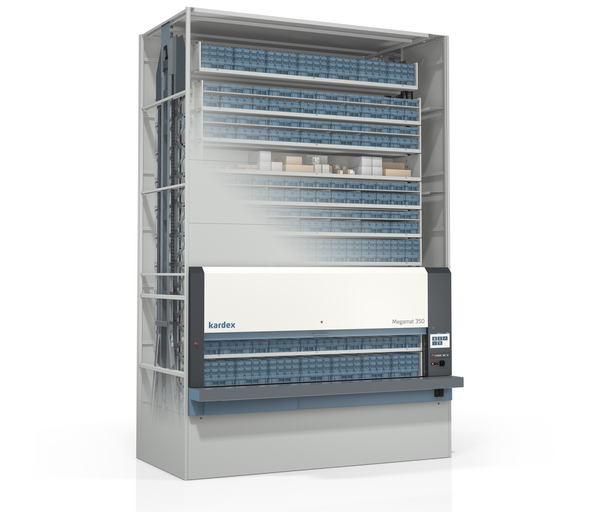Let us face it: as our patience wanes, workplaces are becoming busier. Imagine spending hours looking for a crucial item in a warehouse or trying to find a file in a messy workplace. It is similar to trying to find a needle in a haystack, except the needle is giggling at you from a shadowy corner, and the haystack is your to-do list.
Vertical storage system acts as super heroes of organization in this situation. Consider them the Marie Kondo of storage: small, effective, and transformative. They are here to change the way you handle, retrieve, and store things. They protect you against the inefficiency monster that lurks in every office in addition to saving space.
Why Is Workflow Efficiency Important?
“Why all this fuss about enhancing workflow efficiency?” you may ask. This is the reason:
- Saving time translates into earning money since less time is spent looking and more time is available for useful activities.
- A more efficient workflow lowers stress and raises morale, which leads to happy workers and happy businesses.
- Improved resource management results in fewer mistakes, reduced downtime, and more efficient use of your resources.
This post will discuss how an automatic storage and retrieval system may help you clear your thoughts and space and make your productivity more efficient. Because efficiency does not have to be dull, we will also inject some fun throughout.
A Vertical Storage System: What Is It?
Imagine having a tall, streamlined cabinet that arranges things vertically in place of sweeping shelves that take up your entire floor area. Everything is small, easily accessible, and well-organized, making it comparable to exchanging a mini-mart for a skyscraper.
Important attributes of vertical storage systems include:
- Space-Saving Design: By extending upward rather than outward, these systems maximize vertical space.
- System for Automatic Storage and Retrieval (ASRS): This function is included in several models, which use conveyors or robots to fetch objects when a button is pressed.
- Customizable Shelves: It is adaptable for keeping objects of various sizes thanks to its adjustable sections.
- User-Friendly Interfaces: Operations are made simpler by inventory management systems and digital controllers.
Why Is Vertical Storage Better Than Horizontal?
Although it may appear conventional, horizontal storage is about as effective as sending emails with a carrier pigeon. Vertical storage systems are superior than their horizontal counterparts for the following reasons:
- Accessibility: Things do not come to you; they come to you.
- Compactness: By moving vertical, you may free up 80% of your floor area.
- Speed: Your team can concentrate on what really important if retrieval is quicker.
- Safety: No more risking injury when reaching for high shelves or scaling ladders.
Benefits of a Vertical Storage System
A vertical storage system is an investment in the well-being of your business, not merely a beautiful piece of equipment. This is how you may go from “just surviving” to “thriving” with your workflow.
Optimizes area Utilization:
A vertical storage system may conserve up to 80% of your floor area by building upward. Expanding operations or adding a break room (because coffee breaks are a must) are two more profitable uses for this additional space.
Quickens Retrieval Time:
Things are sent to you at the touch of a button thanks to the integrated automated storage and retrieval system (ASRS). Bid farewell to drawn-out retrieval procedures and welcome to quicker turnaround times.
Increases Accuracy:
Digital inventory monitoring is frequently included with integrated systems, guaranteeing that you are constantly aware of the whereabouts of every item. By lowering human error, you may avoid the dreaded “lost inventory” situation.
Enhances Workplace Safety:
Vertical storage systems raise objects to a comfortable, ergonomic height, eliminating the need for ladders and climbing. This guarantees adherence to safety requirements and significantly lowers the risk of workplace injuries.
Increases Productivity:
Your staff works on important tasks for longer periods of time rather than wasting it looking for answers. Employees may fulfill deadlines and even surpass expectations when procedures are simplified.
Eco-Friendly:
Your operations’ energy impact is decreased via effective storage. Additionally, the system may be integrated with environmentally friendly practices, such as retrieval techniques that use less energy.
Real-World Applications of Vertical Storage Systems
Let us examine some real-world situations now that you understand why automatic storage and retrieval system are fantastic. Here are some examples of how companies in different sectors are using these technologies.
Logistics and Warehousing:
- Organize and store thousands of goods in a small space.
- To find and ship items fast, use the automated storage and retrieval system.
- Reduce the amount of time lost on restocking or inventory inspections.
Manufacturing:
- Maintain an orderly inventory of tools, replacement parts, and raw materials.
- Make certain that necessary parts are constantly accessible to minimize downtime.
- Reduce wasted work and space to enhance lean production techniques.
Healthcare and Pharmaceuticals:
- Use climate-controlled vertical systems to securely store medical equipment and supplies.
- To avoid expired product and adhere to stringent standards, use inventory management features.
- During crises, make essential goods more quickly accessible.
Retail:
- Set up cramped stockrooms to facilitate shelf replenishment.
- Keep the store from becoming overcrowded while managing seasonal inventories.
- To prevent overstock or stockouts, make sure that things are tracked accurately.
Steps to Implement a Vertical Storage System
Are you prepared to revamp your work area? You can switch to vertical storage system to improve workflow efficiency as follows:
Determine Your Needs:
- Consider the kind and quantity of goods you keep.
- Determine which parts of your process are most affected by inefficiencies.
Select the Appropriate System:
- Choose a system that meets the requirements of your sector.
- While some systems focus on heavy-duty objects, others provide temperature control.
- For maximum effectiveness, make sure it has an automated mechanism for storage and retrieval.
Make a layout plan:
- Decide on the installation location for the device.
- For ease of access, keep it in the center.
- To create suitable divisions, take into account the goods’ weight and dimensions.
Train Your Team:
- Educate your employees about the system and its intuitive user interface.
- Educate them on safety procedures and digital inventory management.
Keep an eye on and optimize:
- Examine the system’s performance on a regular basis.
- To find places where you may increase efficiency even further, use analytics.
Wrapping It All Up:
Businesses’ storage needs change as they do. The good news? A vertical storage system is made to expand with you in order to increase workflow efficiency. Numerous models include integration with cutting-edge technologies like AI and IoT, as well as modular updates.
By using a vertical storage system, you may make your workflow more effective, stress-free, and streamlined in addition to simplifying your workspace. These methods offer measurable advantages that maintain your team’s satisfaction and your company’s success, whether you are organizing supplies in a medical institution or managing inventories in a warehouse.
Given that the future is vertical, why continue with the status quo? Streamline your processes, make the most of your available space, and avoid pointless searches. After all, your next coffee break is the only thing you should be looking for at work.
Also Read: Efficient Movers and Packers for Your Next Home Relocation





